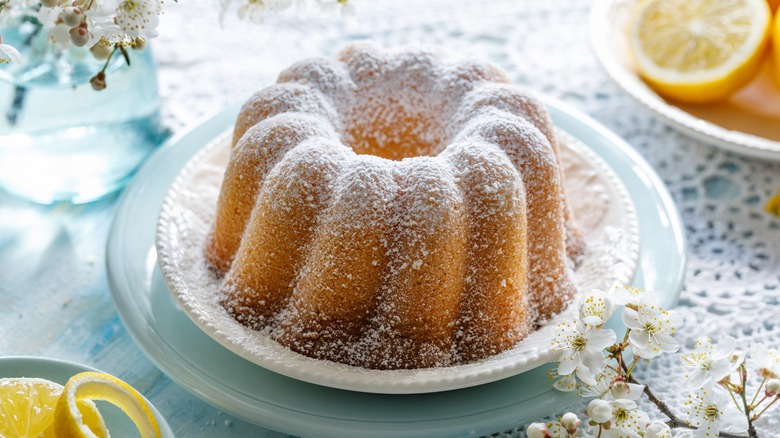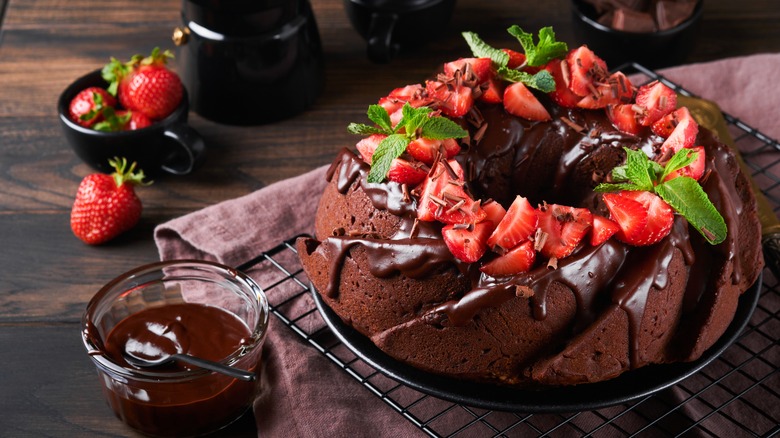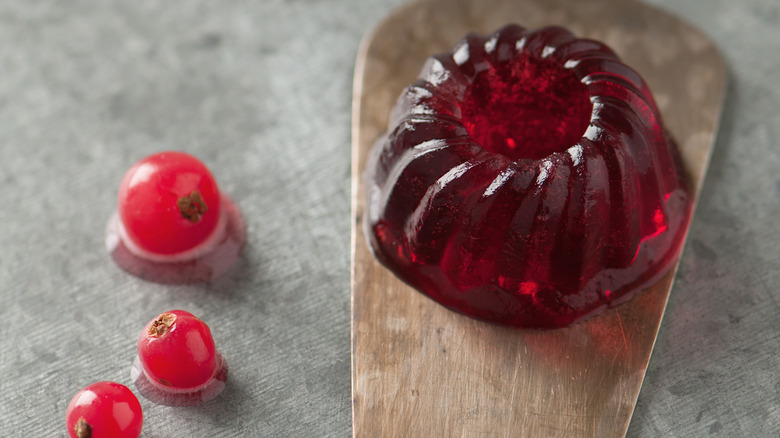The Easy Tip For How Much Batter You Need For A Bundt Cake Pan
For the past 60 years, the elegant bundt cake pan has provided home cooks across America with an easy and efficient way to create elaborate-looking desserts, no matter their culinary skills. According to Norway House, the bundt pan was originally inspired by traditional Jewish pans popular in Eastern Europe, and named after the German word "bundkuchen," meaning "a cake for gathering." It makes sense that they have become a staple for group celebrations whatever the occasion, whether that's intricately iced bundt cakes in snowflake patterns for the holidays or confetti cakes with cream cheese frosting at kids' birthday parties.
With everything opening up again after the pan-demic, you might be looking for ideas and inspirations for your next dinner party dessert. Yet, here's a tip you might want to know before digging out your old bundt pan and making a grand centerpiece that will surely be the cherry on top of your guests' evening.
How much batter to use
According to King Arthur Baking, the amount of batter you should use with your bundt pan will depend on its size. Pans can vary between 10- and 12-cup, and come in a variety of widths and depths. The easiest way to measure your pan's true capacity is to fill it with water, up to within 1 ¼ inch of the top rim. You can then simply measure the water and convert it, a much easier process than matching up volume and dimensions.
Adding too little batter to your pan could result in an underwhelming cake that might be too hard, soft, or the wrong shape. But the alternative is much worse for both you and your oven! As Bake or Break explains, you should avoid filling the pan any higher than three-quarters of its overall capacity, as doing so could cause overflow when your cake rises. If you've made too much batter and have some left over, that's a perfect excuse to bake another cake or set of cupcakes to complete your dinner party arrangement.
Different styles
With egg prices finally going down, there's no better time to experiment with breaking the cake mold, so to speak, and trying out new cookware. With bundt pans available in a range of styles and shapes, from rose and lotus flowers to festive yule logs, make sure you measure the capacity of each individual pan you use, rather than assuming one size fits all. The amount of batter used in each recipe will also change depending on what you're baking — with denser cakes requiring thicker batter, so you'll need to adapt your cups accordingly.
Perhaps the most important aspect to consider when choosing a bundt pan is the material it's made from — which can include anything from silicone to ceramics or cast iron. Typically, metal-based pans such as aluminum are the best option because not only are they sturdy and durable, they're much better at conducting heat which will result in a smoother and more efficient bake. According to Yahoo, you should avoid glass pans as these don't conduct heat as easily, and ideally choose a light-colored pan to prevent over-browning.


